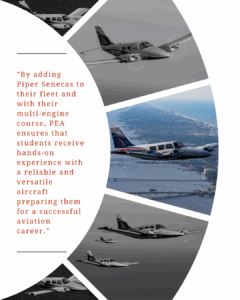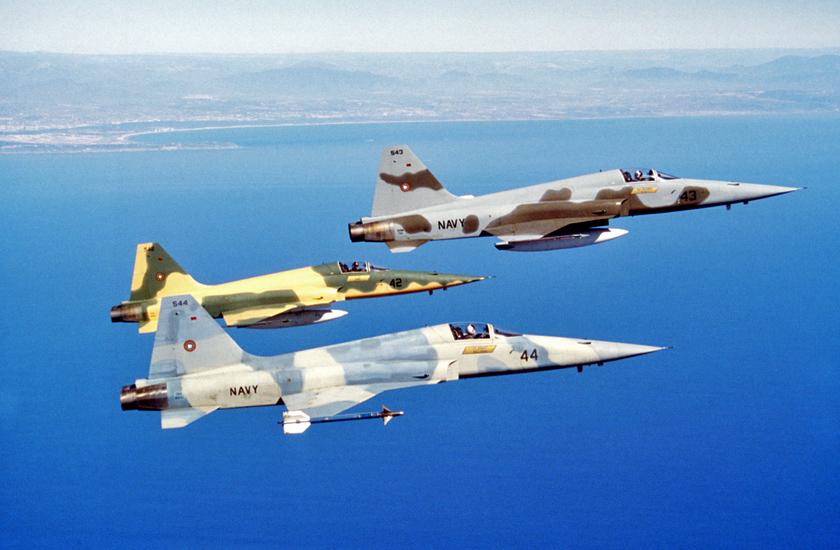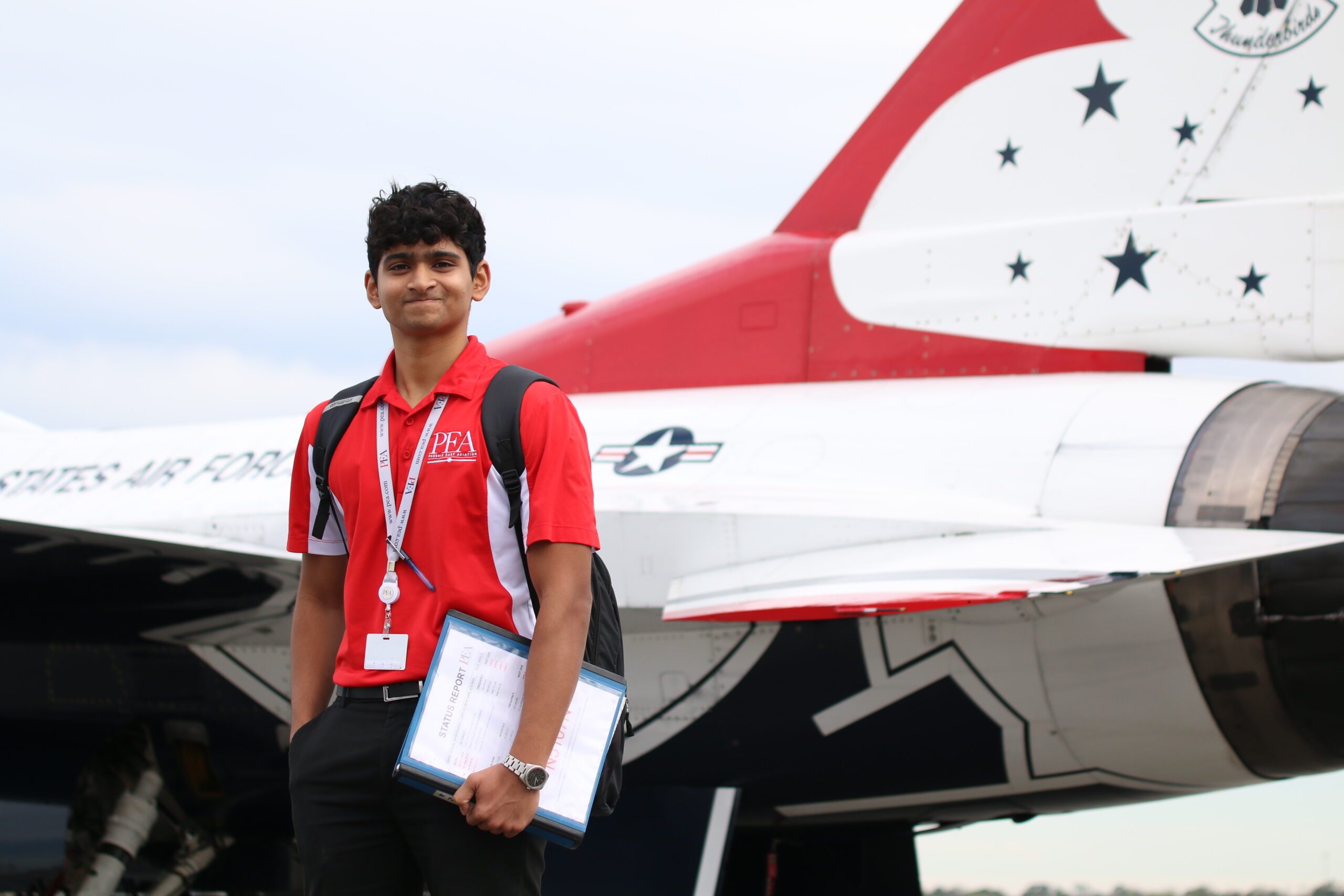Flight Training in Focus: Piper Senecas and Phoenix East Aviation’s Multi Engine Course
The Piper Seneca PA-34 stands as a testament to the evolution of light twin-engine aircraft, offering a blend of performance, reliability, and versatility. Since their introduction in 1967, the Seneca has become a key in multi engine flight training. So, how does this aircraft play a role in Phoenix East Aviation’s multi engine course? Read on to find out.
History of Piper Seneca PA-34
The Piper PA-24 Seneca was introduced in 1971 as a twin-engine variant of the Piper Cherokee Six. Initially powered by Lycoming IO-360 engines, the Seneca underwent several revisions to enhance performance and handling characteristics. Notable models include the Seneca II, featuring turbocharged engines for improved high-altitude performance; the Seneca III, which introduced more powerful engines and a redesigned cockpit; and the Seneca V, which offered advanced avionics and improved aerodynamics. Throughout its production, the Seneca has been commended for its reliability and suitability for flight training purposes.
Advantages of the Piper Seneca as a Training Aircraft
- Multi-Engine Proficiency:

The Seneca’s twin-engine configuration allows students to gain hands-on experience with multi-engine operations, including engine-out procedures and single-engine flight handling. This experience is crucial for obtaining multi-engine ratings and preparing for a more complex aircraft.
- Instrument Flight Training
Many Seneca models are equipped with advanced avionics, including GPS, VOR, ILS, etc. These features facilitate comprehensive instrument flight training, enhancing a student’s ability to operate under Instrument Flight Rules (IFR).
- Safety Features
The Seneca’s counter-rotating engines eliminate the critical engine limitation found in many light twins, enhancing safety during engine-out scenarios. Additionally, its handling characteristics make it suitable for students transitioning to a multi-engine aircraft.
The Role of Phoenix East Aviation in Multi-Engine Training
Located in Daytona Beach, Florida, Phoenix East Aviation has been successfully training pilots since 1972, offering comprehensive flight training programs. Becoming a pilot requires both a significant time and financial investment. That’s why choosing an accredited flight school is crucial – accreditation not only ensures a high standard of instruction, but also provides financial protection and credibility for students. PEA is one of 4 flight schools in the United States authorized to offer F-1 student visas, making it a top choice for international students pursuing professional pilot training.
In addition to its accreditation, PEA is one of the few FAA-approved schools authorized to offer a “Reduced Minimums” commercial pilot license. This designation allows qualified students to complete their Initial Commercial Pilot License in 50 hours, compared to other FAA Part 141 flight school requirements of 120 hours. PEA also holds self-examining authority, which means students can complete their FAA checkrides in-house with designated PEA check airmen — streamlining the certification process and offering continuity throughout the flight training process.
PEA’s multi-engine flight training program is designed to equip students with knowledge and skills required to operate twin-engine aircraft safely and efficiently. The curriculum includes:
- Engine-Out Procedures: Training on handling engine failures, including simulated scenarios to develop decision-making and emergency response skills.
- Single-Engine Flight Training: Techniques for managing flight with one engine inoperative, focusing on maintaining control and performance.
- Instrument Flight: Utilization of the Seneca’s advanced avionics for IFR training, including navigation and approach procedures.
- Cross-Country Flying: Planning and executing flights that require multi-engine capabilities, enhancing long-distance operational skills.
By adding Piper Senecas to their fleet and with their multi-engine course, PEA ensures that students receive hands-on experience with a reliable and versatile aircraft preparing them for a successful aviation career.
The Piper Seneca PA-34 has proven itself as a valuable asset in flight training, offering a combination of performance, safety, and versatility. Its role in multi-engine training at Phoenix East Aviation, emphasizes its importance in developing professional and proficient pilots capable of operating complex aircraft. As aviation continues to evolve, the legacy of the Seneca as a trainer remains trusty, shaping the future of pilots.
References:
Aviation Consumer. (n.d.). Piper PA-34 Seneca. Retrieved May 19, 2025, from https://www.aviationconsumer.com/aircraftreviews/piper-pa-34-seneca/
Eyre, D.C. (n.d.). Piper PA-34 Seneca. Aeropedia. Retrieved May 19, 2025, from https://aeropedia.com.au/content/piper-pa-34-seneca/
High Sierra Pilots. (2016, January 13). Piper PA-34 Seneca: One of the Last of Its Kind. Retrieved May 19, 2025, from https://highsierrapilots.club/piper-pa-34-seneca/
International Aviation HQ. (2022, April 16). Piper Seneca: The Epitome of Luxury. Retrieved May 20, 2025 from https://internationalaviationhq.com/2022/04/16/piper-seneca-epitome-luxury/Plane & Pilot Magazine. (n.d.). Seneca in the Fifth Generation. Retrieved May 20, 2025, from https://www.planeandpilotmag.com/article/seneca-in-the-fifth-generation/




